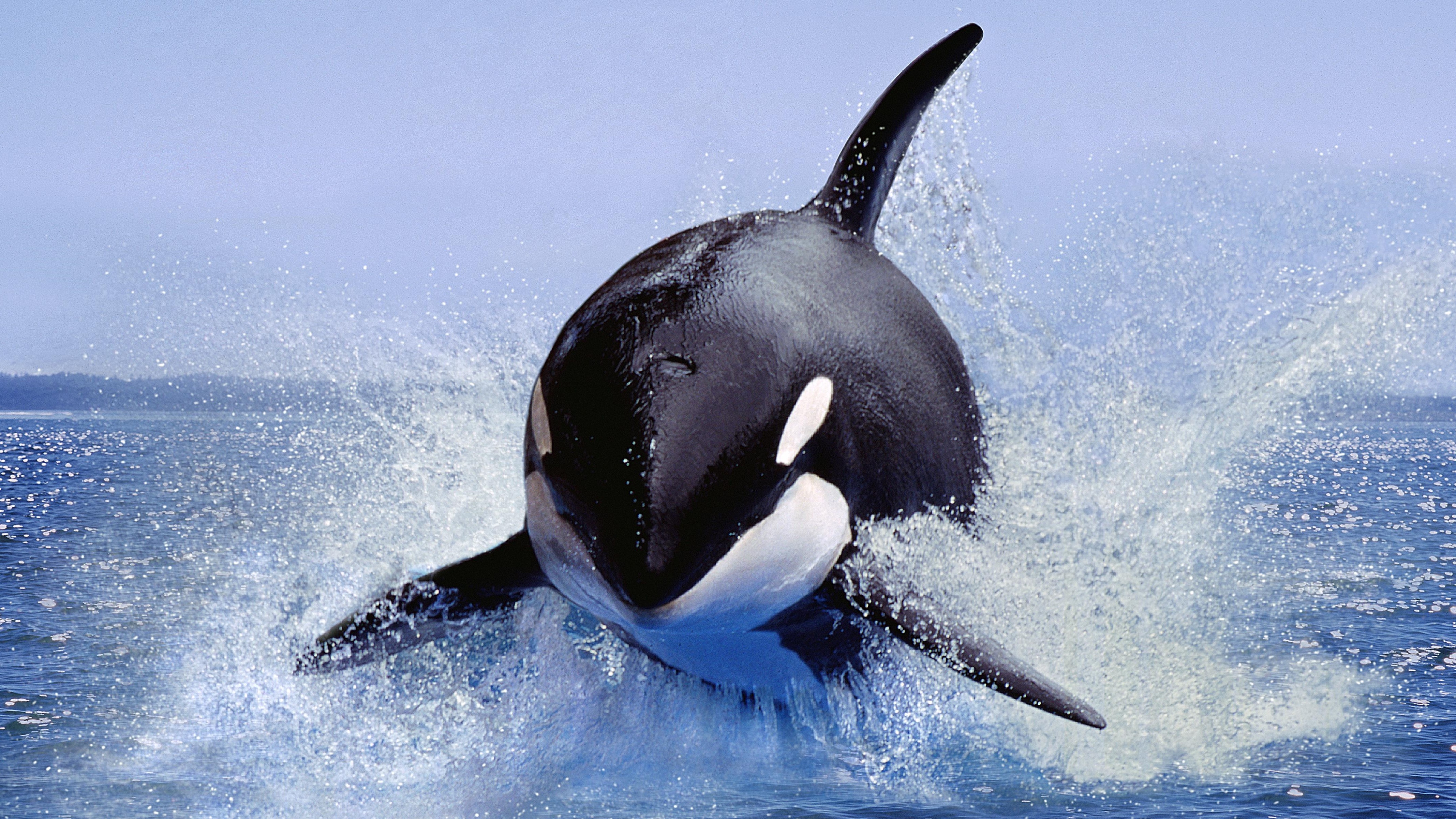'An enormous mass of flesh armed with teeth': How orcas gained their 'killer' reputation
From Pliny the Elder to the Swedish naturalist Carl Linnaeus, historians and naturalists have found many ways to describe these fascinating apex predators.
Interest in orcas is currently surging, with attacks on boats off the coasts of Spain and Portugal, and a pair of liver-eating killer whales targeting great white sharks off South Africa.
In "The Killer Whale Journals: Our Love and Fear of Orcas," biologist and whale researcher Hanne Strager explores our relationship with one of the oceans biggest predators. In the extract from the book below, the author looks at the very first written descriptions of orcas – and how early naturalists struggled to define these intelligent and deadly animals.
Nobody knows when killer whales were first identified as a species, but with their striking coloration and formidable size it seems likely that they would have been recognized very early.
Apart from rock carvings, which of course also qualifies as a kind of description, we owe the first written description of killer whales to Pliny the Elder, who lived in the first century AD. Pliny was a diligent and hardworking officer of the Roman Empire, who in his spare time sought to collect and present all the knowledge in the world into his magnum opus "Naturalis Historia" (Natural History).
It is sometimes called the first encyclopedia as it deals with almost everything in the natural world: astronomy, mathematics, botany, geography, pharmacology — you name it. It is all in there together, along with human activities like mining, sculpture, painting, and agriculture. "Naturalis Historia" is not organized alphabetically like a modern encyclopedia but presents itself as a guided tour, like an ancient precursor to Bill Bryson's enlightening and entertaining "A Short History of Nearly Everything."
"Naturalis Historia" is not short though (neither is Bryson's book, come to think of it). Pliny's comprises no less than 37 volumes. Killer whales appear in volume nine, "The Natural History of Fishes." Here Pliny dedicates a whole chapter to whales, which at that time were classified as fish. That was not as such a bad mistake as it sounds despite that Pliny and others before him knew very well that whales were mammals that nursed their young from milk glands, breathed air with lungs and not gills, and had forelimbs instead of fins. This is something they had probably learned from studying dead whales and dolphins found on the shore. The fact that they were marine creatures living in the water was the determining factor — they belonged with the fishes. But they were still different enough that Pliny grants them a chapter of their own apart from the other fish.
Related: Mystery orcas with bulbous heads wash up dead in unexplained mass stranding
Get the world’s most fascinating discoveries delivered straight to your inbox.
Pliny tells how big baleen whales sought shelter in secluded bays to give birth to their calves and then adds: "This fact, however, is known to the orca, an animal which is peculiarly hostile to the balæna, and the form of which cannot be in any way adequately described, but as an enormous mass of flesh armed with teeth."
Pliny asserts that the desperate whales are well aware that their only resource is to take to flight in the open sea and to range over the whole face of the ocean; while the orcæ, on the other hand, do all in their power to meet them in their flight, throw themselves in their way, and kill them either cooped up in a narrow passage, or else drive them on a shoal, or dash them to pieces against the rocks.
Pliny doesn't describe in detail what killer whales looked like and it is possible that he had never seen them himself but was relying on descriptions from seafarers and others who had come across them. Pliny's portrayal of killer whales as monstrous was an image that would cling to them for centuries. The killer whale's behavior when hunting larger prey was also noted in another ancient book.
"There is another kind of whale called the grampus, which grow no longer than twelve ells and have teeth in proportion to their size, very much as dogs have. They are also ravenous for other whales just as dogs are for other beasts."
King Håkon Håkonsson
Somewhere between the years 1250 and 1260, the Norwegian King Håkon Håkonsson had a book made with instructions to his sons about his kingdom and how to rule it, a kind of fatherly introduction to the ins and outs of being a king. The book is called "The King's Mirror" (Kongespeilet) and includes in-depth information about the furthest reaches of his kingdom, including Iceland and Greenland — handy knowledge for Håkon's descendants to enforce their sovereignty in such an extensive realm. The animals in the sea get special attention, and a varied and detailed knowledge of many species of whale is included in the book. For a seafaring people like the Norwegians, this was vital information. Killer whales are featured for their gluttonous appetite:
"There is another kind of whale called the grampus, which grow no longer than twelve ells and have teeth in proportion to their size, very much as dogs have. They are also ravenous for other whales just as dogs are for other beasts. They gather in flocks and attack large whales, and, when a large one is caught alone, they worry and bite it til it succumbs."
Like Pliny, the author of "The King's Mirror" considered all whales, including killer whales, as fish and they continued to be classified as fishes for quite a while. When the renowned taxonomist and natural historian Linnaeus decided to name all living organisms in the world, he listed the whales along with the fishes too — at least in his early treatise from 1746. He was also the first to give killer whales a scientific name.
He called them Orcinus orca, keeping the name orca, which had been around at least since the time of Pliny, and adding Orcinus, Latin for "belonging to the underworld." The meaning of the word orca is a bit obscure, but it may be derived from orcus, meaning "underworld." Others think it comes from the Latin word orca for "barrel" or "cask," referring to the shape of a whale's body.
When Linnaeus published the tenth edition of "Systema Naturae," he made a quick decision and moved all the whales and dolphins, including the killer whales, to be grouped with the other mammals and not with the fishes. He placed the killer whales in the family of dolphins (Delphinus) together with pilot whales, bottlenose dolphins, and common dolphins.
Modern taxonomists, who have studied both the anatomy and genetics of this diverse family, agree with Linnaeus on this; killer whales are essentially very large dolphins. Local people in areas with killer whales, as well as sailors and whalers, knew these animals well, of course, and had a wealth of names for them, like black fish in Canada, spekkhogger in Norway, and ardlursak in Greenland, but natural historians continued to struggle with how to identify and characterize killer whales despite Linnaeus's efforts.
The big difference in size between the dorsal fins of the males and females, for instance, was a source of confusion. Were there two different species or a single one? And the many different reports on the coloration also perplexed the natural historians who were so eager to assign every species to a designated space in the order of life.
Sometimes killer whales were black and white, while at other times they were described as being black and yellow or with violet coloration on their flanks. The confusion was undoubtedly aggravated by descriptions being made of dead animals, as the color of a whale changes rapidly after death as decomposition sets in.
Much of this uncertainty waned when the Danish zoologist Daniel Eschricht performed an autopsy on a dead killer whale in 1861. After the dissection he wrote a detailed description that clarified most of the ambiguities. But his report became famous for a very different reason and helped to sustain the bloodthirsty reputation of killer whales.
He claimed that in the stomach of the dead whale he found the remains of no less than 13 seals and 14 porpoises. His observations are still cited all over the world and continue to raise eyebrows. Could his report really be true, or did he wildly exaggerate?
The Killer Whale Journals: Our Love and Fear of Orcas - $21.92 at Amazon
When intrepid biology student Hanne Strager volunteered to be the cook on a small research vessel in Norway's Lofoten Islands, the trip inspired a decades-long journey into the lives of killer whales ― and an exploration of people's complex relationships with the biggest predators on earth. The Killer Whale Journals chronicles the now internationally renowned science writer's fascinating adventures around the world, documenting Strager's personal experiences with orcas in the wild.
Excerpted from "The Killer Whale Journals: Our Love and Fear of Orcas" by Hanne Strager. Copyright 2023. Published with permission of Johns Hopkins University Press.

Hanne Strager is a biologist, whale researcher, and the future Director of Exhibitions and Visitor Experience at The Whale, a museum in Norway set to open in 2025. She cofounded a whale center in Norway and has served as the Director of Exhibitions at the Natural History Museum of Denmark. She is the author of "The Killer Whale Journals: Our Love and Fear of Orcas" and "A Modest Genius: The Story of Darwin’s Life and How His Ideas Changed Everything."
 Live Science Plus
Live Science Plus









